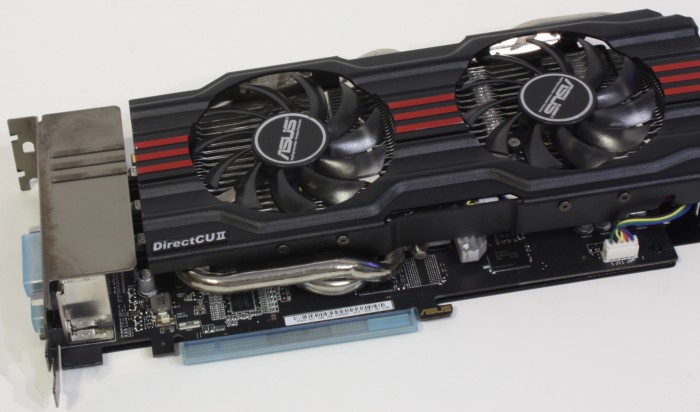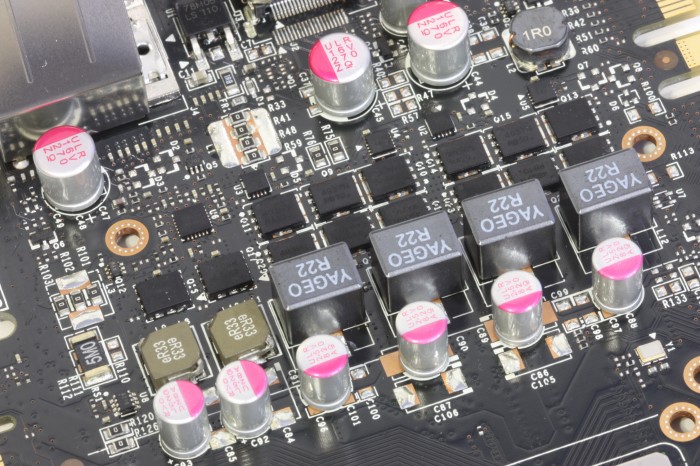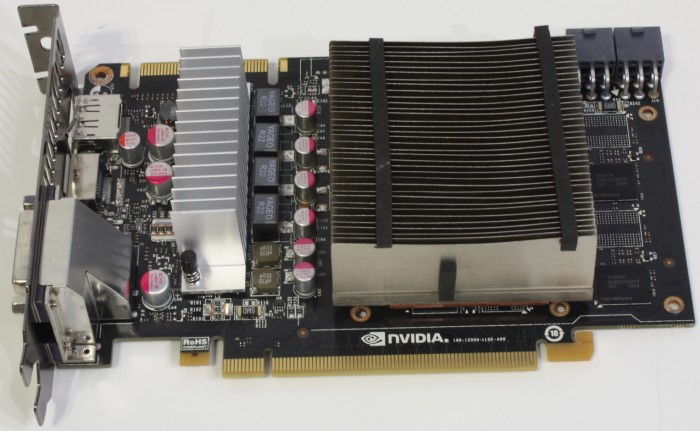Overview of the ASUS GeForce GTX670 DC II TOP
The packaging is very similar to what we saw on the GTX 680 DCII TOP which is not a surprise as ASUS keeps pretty good continuity across its offerings. The claw marks are present and honestly the only changes we could find would be spec details and of course removal of the VGA Hotwire function as this card does not carry support for this feature. All of the other features, such as the SAP components for the VRM, the DirectCU II cooler, and many others are there just as found on the 680 variant.
Here is what you see when we open the box. The topmost small box carries the accessories as listed below.
-
Installation Disc
-
Dual 4 pin Molex to 6 Pin PCIe adapter
-
Instruction Manual
The accessory package is quite small but covers everything needed to get this card hooked up and running.
Click Images to Enlarge
The card is huge—almost as sizable as the 680 but the 680’s PCB is definitely a bit taller and longer but this card is definitely a full size PCB versus the reference one we received from Nvidia directly. The DirectCU II cooler’s heatpipes can be seen here and they are very effective at moving heat quickly away from the GPU and through the cooling fins.
Click Images to Enlarge
The Backplate for the card adds much rigidity to the PCB which means less chance of sag from the card when installed in the system. Also the dual SLI connections are in place for up to 4 Way SLI usage which will provide some amazing scaling . Through the backplate on the rear of the GPU we have a small window which shows off come neat little components. These are SAP capacitors and are placed directly on the opposite side of where the GPU is on the PCB so it has basically the most direct path to supply the GPU possible which ensures yet again that even more stability will be supplied to the GPU power circuit as needed when really pushing the card.
Click Images to Enlarge
The outputs on the card are standard for a GTX670/680 model with dual DVI (1 x DVI-I & 1 x DVI-D) HDMI and DisplayPort. With the introduction to the 6 series GPUs Nvidia has opened up the ability to operate more than 2 displays on a dingle card with option for up to 4 from this single card. This allows for surround plus an extra accessory display to be used for messengers or anything else not used in the triple gaming screen configuration.
Popping the Top off the TOP
Click Images to Enlarge
With the heatsink removed first thing I can see is that this cooler uses some really fat heatpipes. They are also flattened out/lapped at the base to ensure that they have a nice snug fit against the GPU for maximum thermal transfer. The heatsinks dual fans use a single header which ensures each fan gets the same signal so the fans operate at the same speed. The heatsink is mounted by four screws which keep equal retention pressure across the GPU surface which also helps with optimal thermal transfer. the card naked definitely now shows the difference from the 670 and 680 version as the PCB is quite a bit smaller especially in height.
Click Images to Enlarge
Here we have the GPU which is a GK104 GPU sporting 1344 processing cores with a Nvidia normal clock of 915 with a Boost clock of 980. ASUS couldn’t leave that alone and had to push it to ensure they had a top performer with the TOP series coming in at a insanely quick 1058MHz for the base clock and a top boost clock of 1137MHz which is a huge jump over the reference numbers we saw on the standard card.
Click Images to Enlarge
Here we have the card with the lid popped off and we take a look at what makes the VRM special. The combination of DIGI+ controller and SAP components ensures that the VRM is not only strong but also very efficient and stable for performance of the card. The small passive cooler is more than enough as the dual fans blow through the DirectCU II’s cooler and keep the VRM nice and cool. The cooler is basically supplemental as the VRM with the DIGI+ control allows for active control over load which means that the VRM is not constantly on or loaded causing excess heat so we really don’t see that being even close to an issue even when overclocked.
Click Images to Enlarge
Here is the reference Nvidia card in all of its glory. Now this card is an excellent performer but when it comes to functionality and efficiency the ASUS definitely takes the cake here. As you can see the reference card uses a standard blower style fan with a skived fin array cooler for the GPU. The skived fin array does work but in comparison the DirectCU II cooler can deliver temps in excess of 6-10 degrees Celsius cooler which may not seem like much in its numeric form but that really adds quite a lot of headroom to the equation.
 Bjorn3D.com Bjorn3d.com – Satisfying Your Daily Tech Cravings Since 1996
Bjorn3D.com Bjorn3d.com – Satisfying Your Daily Tech Cravings Since 1996





























